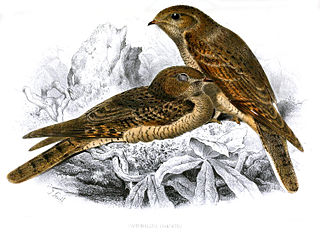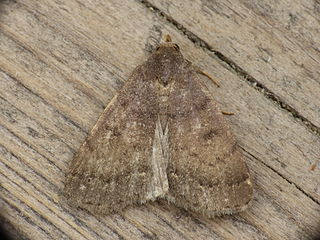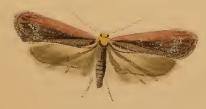
The Sphingidae are a family of moths (Lepidoptera) called sphinx moths, also colloquially known as hawk moths, with many of their caterpillars known as “hornworms”; it includes about 1,450 species. It is best represented in the tropics, but species are found in every region. They are moderate to large in size and are distinguished among moths for their agile and sustained flying ability, similar enough to that of hummingbirds as to be reliably mistaken for them. Their narrow wings and streamlined abdomens are adaptations for rapid flight. The family was named by French zoologist Pierre André Latreille in 1802.

Lynx spider (Oxyopidae) is a family of araneomorph spiders first described by Tamerlan Thorell in 1870. Most species make little use of webs, instead spending their lives as hunting spiders on plants. Many species frequent flowers in particular, ambushing pollinators, much as crab spiders do. They tend to tolerate members of their own species more than most spiders do, and at least one species has been identified as exhibiting social behaviour.

In population genetics, the founder effect is the loss of genetic variation that occurs when a new population is established by a very small number of individuals from a larger population. It was first fully outlined by Ernst Mayr in 1942, using existing theoretical work by those such as Sewall Wright. As a result of the loss of genetic variation, the new population may be distinctively different, both genotypically and phenotypically, from the parent population from which it is derived. In extreme cases, the founder effect is thought to lead to the speciation and subsequent evolution of new species.
An F1 hybrid (also known as filial 1 hybrid) is the first filial generation of offspring of distinctly different parental types. F1 hybrids are used in genetics, and in selective breeding, where the term F1 crossbreed may be used. The term is sometimes written with a subscript, as F1 hybrid. Subsequent generations are called F2, F3, etc.

The Cape cormorant or Cape shag is a bird endemic to the southwestern coasts of Africa.

The Herminiinae are a subfamily of moths in the family Erebidae. The members of the subfamily are called litter moths because the caterpillars of most members feed on dead leaves of plants, though others feed on living leaves, and/or the mushrooms of fungi as in the case of genus Idia (moth).

The wildlife of South Africa consists of the flora and fauna of this country in southern Africa. The country has a range of different habitat types and an ecologically rich and diverse wildlife, vascular plants being particularly abundant, many of them endemic to the country. There are few forested areas, much savanna grassland, semi-arid Karoo vegetation and the fynbos of the Cape Floristic Region. Famed for its national parks and big game, 297 species of mammal have been recorded in South Africa, as well as 849 species of bird and over 20,000 species of vascular plants.

The plain nightjar is a species of nightjar in the family Caprimulgidae. It breeds in the southern Sahel, Southern Sudan, the Horn of Africa and the southwestern Arabian Peninsula. It migrates to lower latitudes - including central Congo and northern Tanzania. A rather plain looking nightjar with grey-brown, brown, and rufous morphs. Males have white spots on primaries, large white corners to tail, and no white on the throat. Females have buffy-brown wing spots, and no white on the tail.

Veldkamp's dwarf epauletted fruit bat is a species of bat in the family Pteropodidae. It is the only species within the genus Nanonycteris. It is found in Benin, Cameroon, Central African Republic, Ivory Coast, Ghana, Guinea, Liberia, Nigeria, Sierra Leone, and Togo. Its natural habitats are subtropical or tropical moist, mangrove and montane forests, and savanna.

Stenoptilia bipunctidactyla, also known as the twin-spot plume is a moth of the Pterophoroidea family found in North Africa, Asia and Europe. It was first described by the Austrian physician and naturalist, Giovanni Antonio Scopoli in 1763. It is one of four similar looking moths.

Nodaria is a genus of moths in the family Erebidae described by Achille Guenée in 1854.

Blunt’s flat-body or purple carrot-seed moth is a moth of the family Depressariidae. It is found in most of Europe. It is also found in the Near East, North Africa, the eastern part of the Palearctic realm and since 2009 in North America. In the former USSR, it is distributed in the entire European part except for the Far North. It is also found in the northern Caucasus and Transcaucasia, in Kazakhstan, Central Asia, the south of Siberia, and the Russian Far East. It is an introduced species in North America, where it has been reported from Québec and Ontario.

Simplicia cornicalis is a litter moth of the family Erebidae. The species was first described by Johan Christian Fabricius in 1794. It is found in south-eastern Asia and the Pacific. Records include New Caledonia, Réunion, Thailand, Fiji, Hawaii, India, Sri Lanka, the Society Islands, as well as New South Wales and Queensland in Australia. It is an introduced species in southern Florida and Louisiana in the United States.
Nodaria cingala is a moth of the family Erebidae first described by Frederic Moore in 1885. It is found in Sri Lanka, Borneo and Sulawesi. N. externalis is described from African countries such as Kenya, Malawi, Mauritius, Somalia, South Africa and Zambia.
Sinarella discisigna, is a moth of the family Erebidae first described by Frederic Moore in 1883. It is found in Sri Lanka, India, Nepal and Thailand.

Endangered species as classified by the International Union for Conservation of Nature (IUCN), are species which have been categorized as very likely to become extinct in their known native ranges in the near future. On the IUCN Red List, endangered is the second most severe conservation status for wild populations in the IUCN's schema after critically endangered. In 2012, the IUCN Red List featured 3,079 animal and 2,655 plant species as endangered worldwide. The figures for 1998 were 1,102 and 1,197 respectively.












